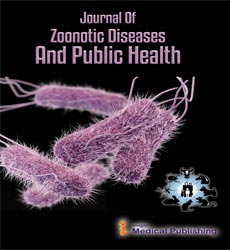S.haematobiuminfection and Chemotherapy-induced changes in Interleukin6 and acute phase proteins associated with inflammation in school.
Abstract
Urine specimens from 212 school children were collected and examined to determine prevalence of Schistosoma haematobium at baseline and 2 years following annual rounds of praziquantel treatment. Levels of 4 acute phase proteins and IL6 were measured at baseline and 2 years following praziquantel treatment. Overall pre-treatment prevalence of Schistosoma haematobium infection was 23.1 % at baseline and 0.47 % after 2 years of annual treatments. Schistosoma haematobium infected children had marginally higher levels of procalcitonin and tissue plasminogen activator before treatment though the difference of all three was not significant p>0.05. Levels of ferritin and fibrinogen were lower in Schistosoma haematobium infected children before treatment, however the difference was also not significant p>0.05using Mann-Whitney test. There was no association between infection status or interleukin6 and the levels acute phase proteins p>0.05 for all acute phase proteins. Findings suggest no bearing of Schistosoma haematobium infection status on level of acute phase proteins before and after annual treatment with praziquantel. Extent of inflammation cannot be determined using ferritin, tissue plasminogen activator and fibrinogen. Levels of interleukin-6 did not have any bearing on levels of acute phase proteins. There is need to explore other acute phase proteins as inflammatory markers in Schistosoma haematobium infection
Open Access Journals
- Aquaculture & Veterinary Science
- Chemistry & Chemical Sciences
- Clinical Sciences
- Engineering
- General Science
- Genetics & Molecular Biology
- Health Care & Nursing
- Immunology & Microbiology
- Materials Science
- Mathematics & Physics
- Medical Sciences
- Neurology & Psychiatry
- Oncology & Cancer Science
- Pharmaceutical Sciences
